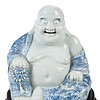Group of Five Framed Chinese Watercolors
Bid Increments
| Price | Bid Increment |
|---|---|
| $0 | $25 |
| $100 | $50 |
| $1,000 | $100 |
| $2,000 | $200 |
| $3,000 | $250 |
| $5,000 | $500 |
| $10,000 | $1,000 |
| $20,000 | $2,000 |
| $50,000 | $5,000 |
| $100,000 | $10,000 |
late Qing dynasty, five scenes depicting the silk production process, watercolor on paper, each sight 8-7/8 x 13 in.; carved and gilt wood frames, 16-1/2 x 20-7/8 in.
Note: Historic Reference: Song Dynasty
The common people mostly wore clothes made of plant fibers such as hemp and ramie, and, at the end of the period, cotton ? but the most highly prized fabric at home and abroad was silk.
The feeding of silkworms (which devoured vast quantities of mulberry leaves), the cleaning of their trays, the unraveling of the cocoons, the reeling and spinning of the silk filaments ? all this was women?s work, as was the weaving of plain cloth on simple home looms. Professional weavers, mostly men working in government or private workshops, operated complex looms to weave the fancy damasks, brocades, and gauzes favored by the elite. (AFE The Song Dynasty in China)"
Provenance: Private Collection, ColoradoCondition
good overall, scattered very light toning and staining, not examined out of frames; frames with light wear and abrasions, some cracks to mats
Purchased items will be available for pick up or shipping from our Asheville, North Carolina auction facility within ten business days of the auction will be assessed a storage fee of $5.00 per day, per item. Purchaser agrees that packing and shipping is done at the purchaser's risk and that the purchaser will pay in advance all packing expenses, materials, carrier fees and insurance charges. At our discretion, items will either be packed by an agent such as a packaging store or Brunk Auctions. Please allow two weeks for shipping after payment is received. Shipment of large items is the responsibility of the purchaser. We are happy to provide names of carriers and shippers if a purchaser so requests. Brunk Auctions will have no liability for any loss or damage to shipped items.





















